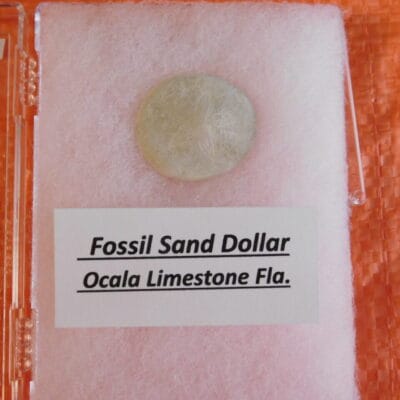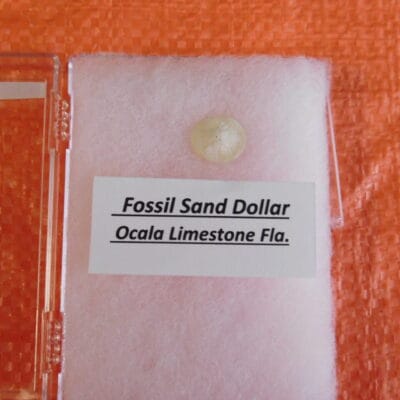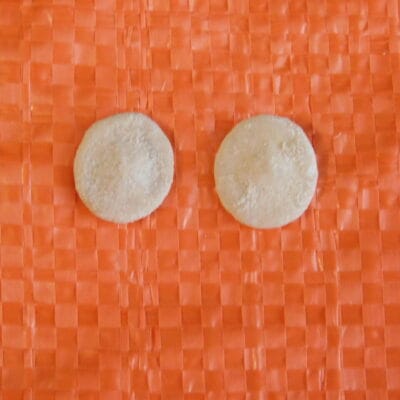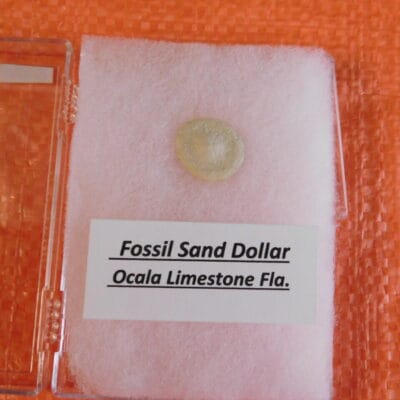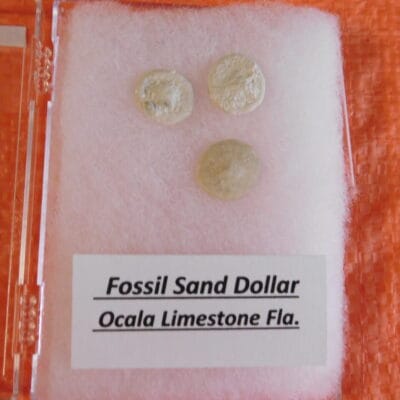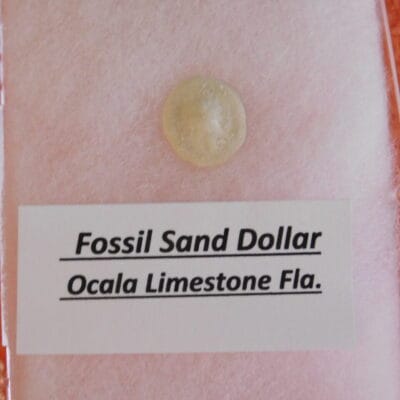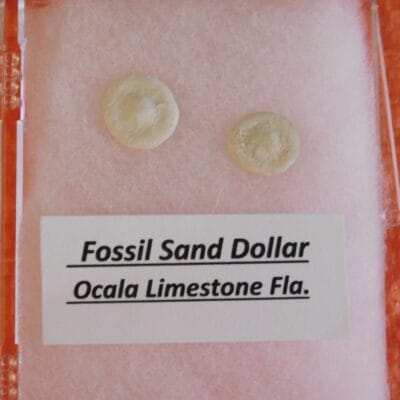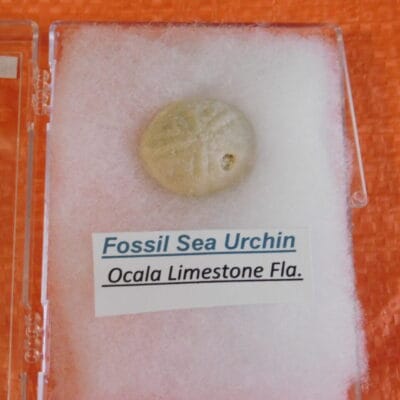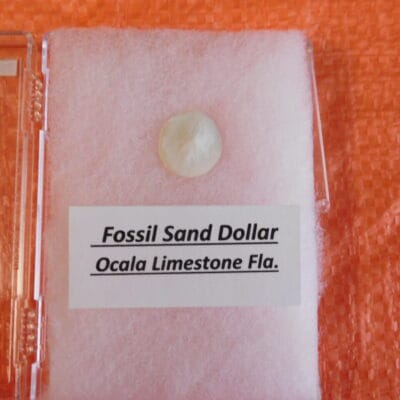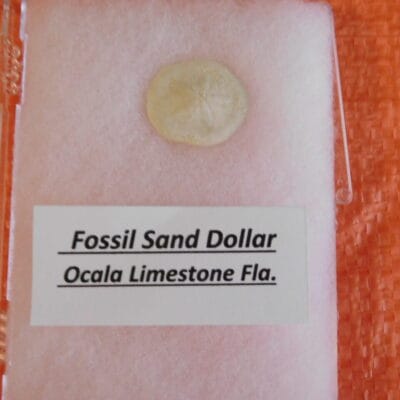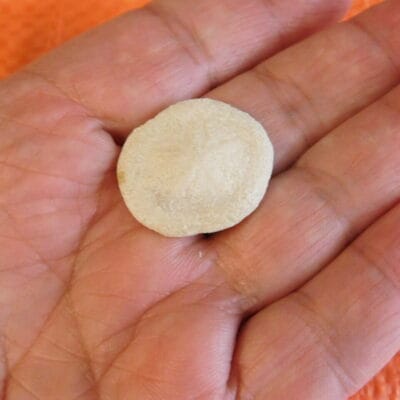Description
Each of the various species of sand dollars has a slightly different appearance. They have a somewhat rounded appearance, and many have a flattened body shape. Unlike other sea urchins, they have very short spines with a texture similar to velvet.
These creatures vary greatly in size. Some measure just two or three inches across, while others reach five or six inches across. Most individuals weigh less than an ounce.
Echinoderms are marine invertebrates with a hard, spiny covering or skin and a pentamerous radial symmetry. They include sea lilies, sea urchins, sea cucumbers, starfishes, basket stars, and sea daisies.
The main feature of echinoid fossils is the set of five ambulacra on the test radiating out from a central point, forming a distinctive five-petalled pattern. The earliest echinoid fossils date from the late Ordovician period, some 450 Mya. The group has a rich fossil record, their hard tests made of calcite plates and their spines being found in rocks from every period since then. Echinoids from the Paleozoic era had thin tests and their fossils are often incomplete, consisting of groups of plates or isolated spines. Later echinoids had more robust tests and fossilized well, usually with the spines detached from the test.[4] Fossils of echinoids are common in rocks from the Jurassic and Cretaceous age, especially from late Cretaceous chalk. In the White Cliffs of Dover in southern England, the echinoid fossils that are present can be used for dating the various chalk strata in which they occur. This is because they are relatively abundant and well-preserved compared to other fossilized animals and can be differentiated by type between different ages.










